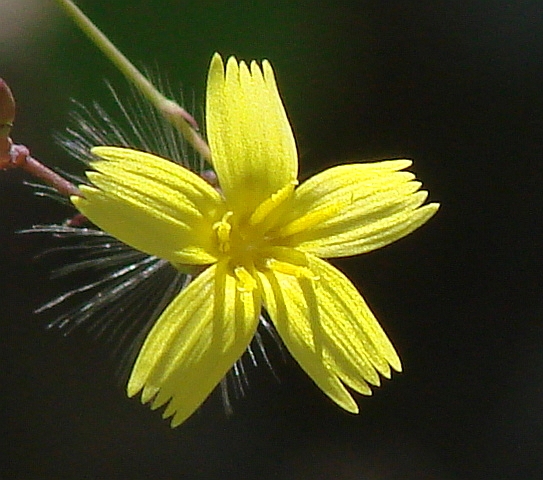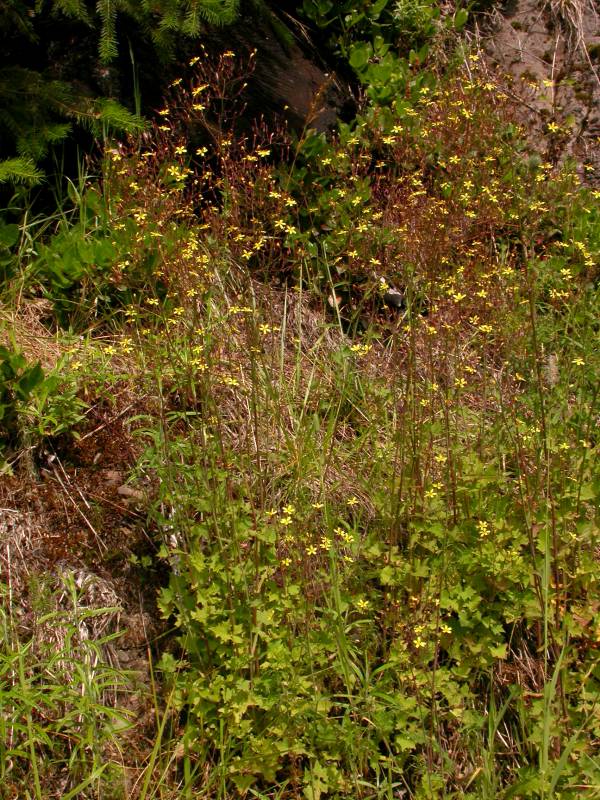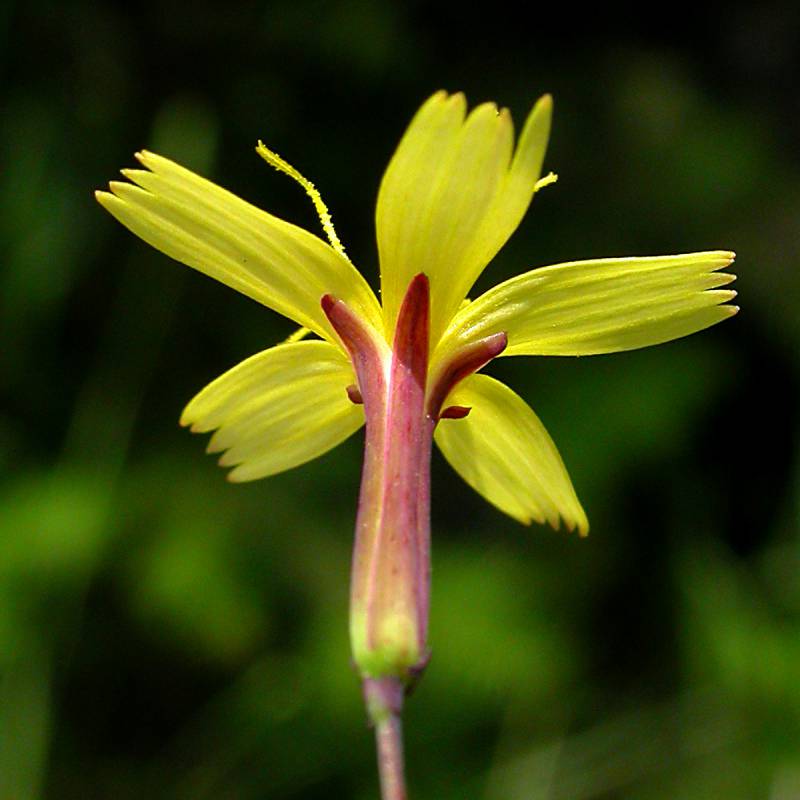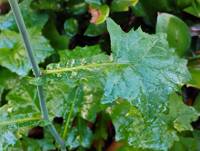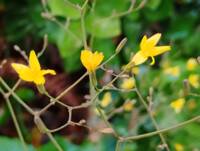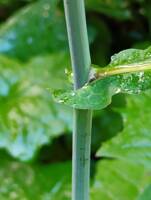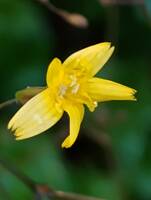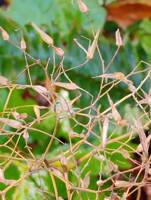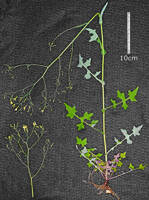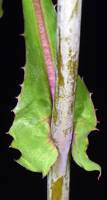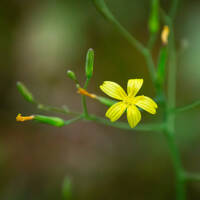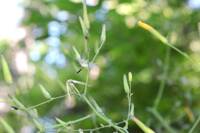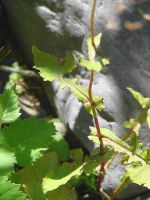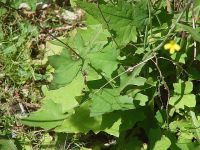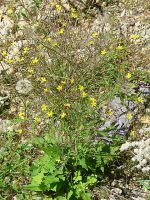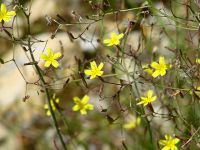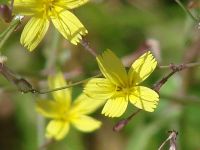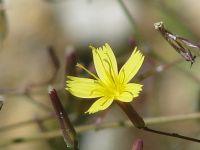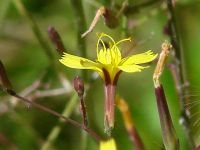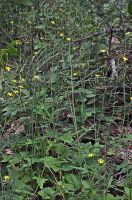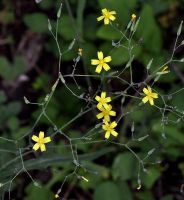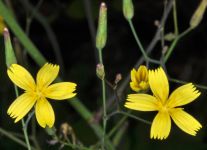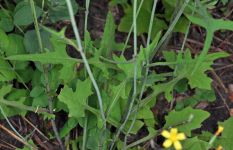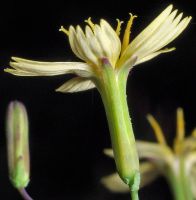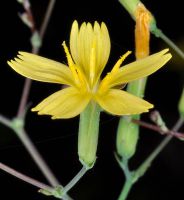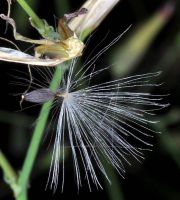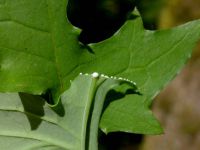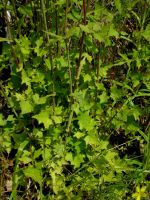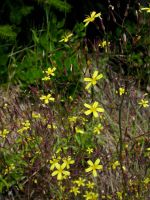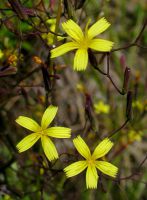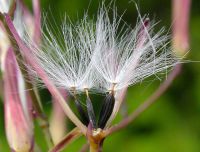Distribution: Occurring on both sides of the Cascades crest in Washington, but more common west of the crest; British Columbia to Oregon; also in eastern North America.
Habitat: Roadsides, fields, wastelots, and other disturbed, open areas from the lowlands to middle elevations in the mountains.
Flowers: July-September
Origin: Introduced from Europe
Growth Duration: Annual
Conservation Status: Not of concern
Pollination: Bees, flies, beetles, wasps
Slender, glabrous annual or biennial, 3-9 dm. tall, with milky juice.
Basal and lower cauline leaves 6-18 cm. long and 3-8 cm. wide, pinnatifid, with a broad terminal segment, the lower surface glaucous; middle and upper leaves few and much reduced.
Heads several to numerous, in an open panicle; involucre with a set of small bracts around the base, 9-11 mm. high in fruit, narrow; corollas all ligulate, yellow, only 5 in a head; pappus of white capillary bristles;
Achenes compressed, 4 mm. long including the 1 mm.-long beak, with several prominent veins on each face.
Publication: Fl. Belg. 60. 1827.
PNW Herbaria: Specimen records of Mycelis muralis in the Consortium of Pacific Northwest Herbaria database
WA Flora Checklist: Mycelis muralis checklist entry
OregonFlora: Mycelis muralis information
E-Flora BC: Mycelis muralis atlas page
CalPhotos: Mycelis muralis photos

